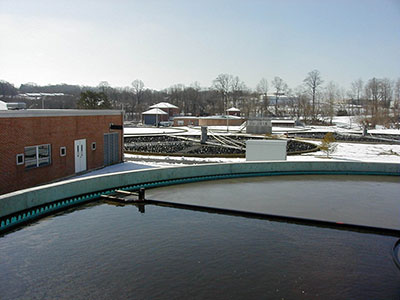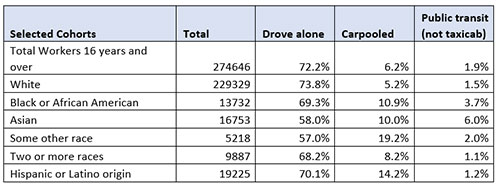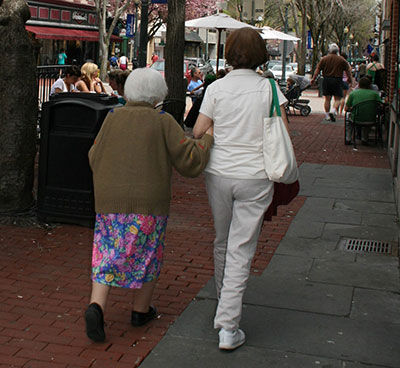Social Equity — Transportation and Infrastructure

Transportation and infrastructure projects are important issues for social equity. Community planners should always seek to determine the unique needs of disadvantaged communities when transportation or infrastructure initiatives are proposed. Fortunately, transportation and infrastructure projects can be modified or constructed to help reverse long standing impacts of past discriminatory practices.
Some useful websites that address this issue include:
- PennDOT: PennDOT Releases Transportation Equity Report, Highlights Efforts to Dismantle Systemic Racism and Inequity in Transportation
- US Department of Transportation: Transportation Disadvantaged Census Tracts (Historically Disadvantaged Communities)
- U.S. Department of Transportation: Areas of Persistent Poverty & Historically Disadvantaged Communities
View mapping illustrating social equity and transportation in Chester County. This mapping addresses public transportation; units with one vehicle or no vehicles; trail planning corridors; and parks and preserves.
Broadband
Internet access via high-speed broadband connections has become recognized as a social equity issue. In general, low-income communities have been historically slower to receive broadband. Furthermore, access to broadband can also be the result of environmental features and overall population density. Thus, rural communities whose population is spread out over large areas are commonly unable to access broadband. Landscapes that are mountainous or otherwise isolated from infrastructure grids are also less likely to have ample access to broadband. Information on the presence of internet or computers, at home can be found in the Education section.
Some useful websites that address this issue include:
- Federal Communications Commission: Advancing Broadband Connectivity as a Social Determinant of Health
- Bookings: Digital prosperity: How broadband can deliver health and equity to all communities
- National Consumer Law Center: Broadband Service is a Racial Equity Priority
- Pew Charitable Trust: The Next Step in Building the Future of Broadband
- Pew Research Center: Home broadband adoption, computer ownership vary by race, ethnicity in the U.S.
Public Water and Sewer Systems

Historically, many disadvantaged neighborhoods have been underserved in terms of public drinking water and sewer service. In lower-income neighborhoods, proper maintenance and upgrades to water and sewer systems have not always received sufficient funding or attention. As a result, older systems are more likely to malfunction creating short term impacts to residents, and longer term impact to housing values.
Some useful websites that address this issue include:
- US EPA: Water Utilities as Anchor Institutions, Impacting the equity, social, and economic fabric of communities and regions
- Northeastern University: Water Equity Team Laboratory (WET Lab)
- Lancaster Clean Water Partners: Commitment to Diversity, Equity, Inclusion, and Justice
- Virginia Commonwealth University: Connecting environmental planning to social equity, Wilder School assistant professor's goal is to eliminate wastewater from urban 'slums'
Commuter Rail and Buses

Commuter rails and bus systems are especially important in lower-income disadvantaged communities where owning a car can be unaffordable or impractical due to limited parking. Transit issues that involve social equity include creating bus stops or multi-modal transportation hubs that better allow residents of lower-income neighborhoods to access job opportunities in more affluent areas. Similarly, there are options for building new commuter train stations or restoring old stations that have been closed. With the rise in telecommuting after COVID-19, the near-term future of transit could change significantly, and these changes could also impact social equity.
Chester County Commuting Features

Source: US Census Bureau, 2020 American Community Survey 5-Year Estimates, S0802.
Some useful websites that address this issue include:
- Pew Research Center: Tackling Social Inequity, Some Cities May Ditch Bus, Subway Fares
- Roads & Bridges: Examining public transportation systems through an equity lens
- American Public Transportation Association: Diversity, Equity and Inclusion
- National Academies: Racial Equity, Black America, and Public Transportation
- ESRI: Create a more inclusive transit system
Sidewalk Access and Safety

As noted above, there is generally a lower rate of car ownership in disadvantaged communities, and a higher rate of transit use. The result is that disadvantaged people are more dependent on walking as part of their commute. In urban settings, this means that aging sidewalks or sidewalks with cracks can pose tripping hazards. Also, high volume intersections built when traffic volumes were lower can be more prone to accidents. In suburban and rural areas, the lack of sidewalks can force pedestrians onto the shoulders of roadways, or onto grass medians where slopes may be steep and surfaces can be muddy when it rains.
Some useful websites that address this issue include:
- NIH National Library of Medicine: Disparities in pedestrian streetscape environments by income and race/ethnicity
- Iowa College of Public Health: Researchers reveal racial disparities in pedestrian injuries
- University of Washington, College of Engineering: Sidewalk equity
- Seattle, WA: Pedestrian Program Racial Equity Analysis
- Rails to Trails Conservancy: Equitable and Inclusive Trails

